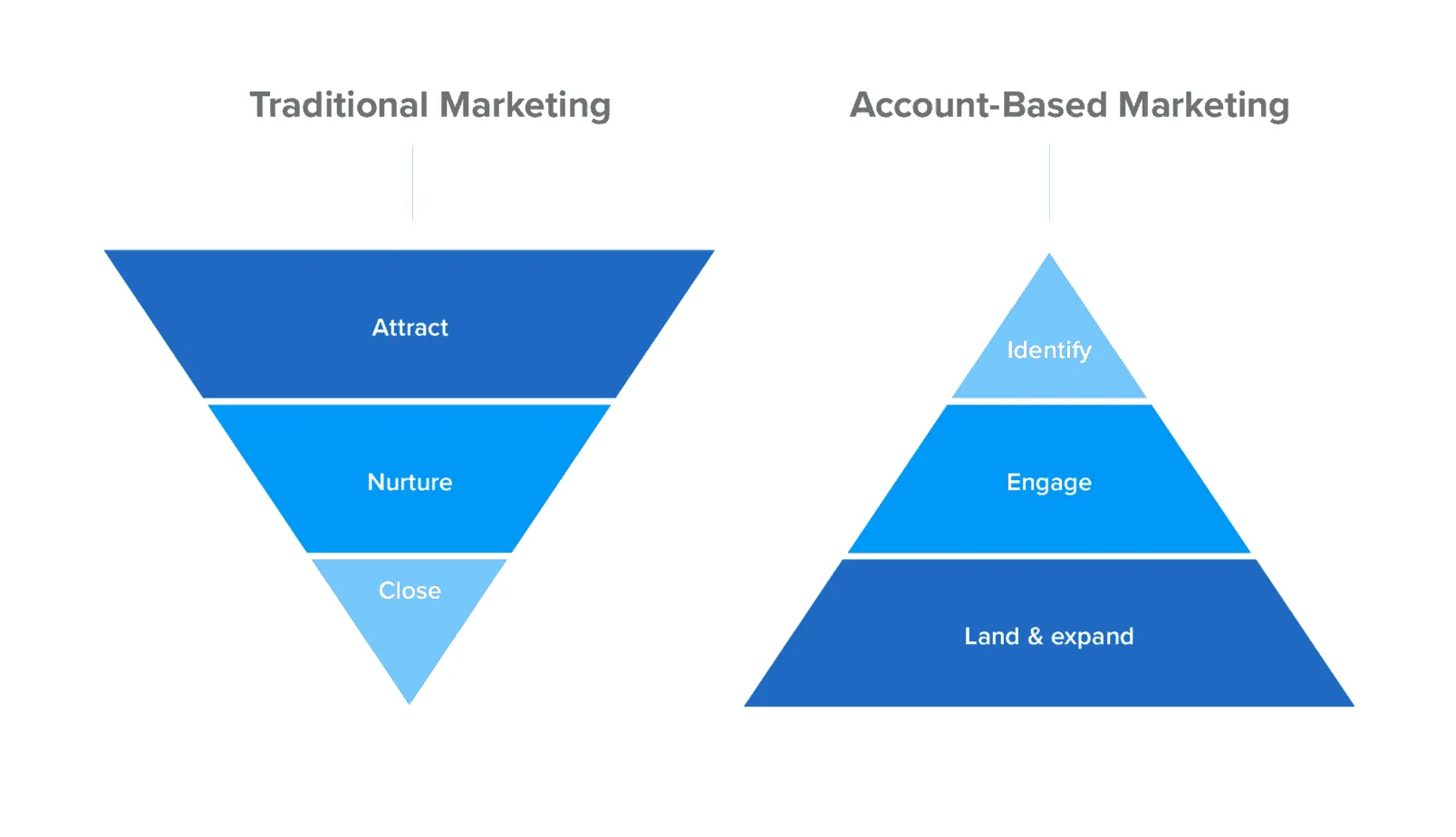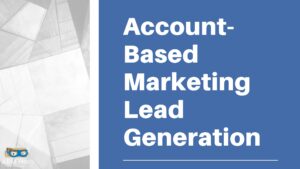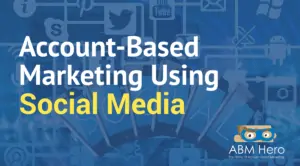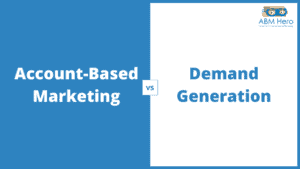Account-based marketing (ABM) isn’t new, but it has experienced a surge in popularity in recent years. Below, we’re going to take a look at what ABM is, how it works and the key metrics you need to track to measure its success.
What does an ABM funnel look like and how does it differ from traditional marketing funnel?

Image source: superoffice
ABM refers to the use of personalised and highly-targeted campaigns to win particular accounts or clients. It differs from other types of marketing because it considers every single person or viewpoint involved in closing a deal, flipping the traditional inbound marketing funnel on its head.
But what does this actually mean? Well, if inbound marketing is about casting your net as wide as possible and waiting for thousands of fish to swim into it in the hopes of catching the one you want, ABM is the opposite – it’s about focusing on that one prized fish from the start, tailoring your marketing to ensure you catch it.
92% of B2B marketers consider account-based marketing to be very important to their marketing efforts, helping to drive revenue, increase ROI, and improve sales productivity.
How does the ABM funnel work?
The first step, or the top-of-the-funnel, is about identifying the businesses or accounts you want to target. Remember, you are trying to target the leads you know will be interested in your service or product, so once you’ve collated the data, rank them in order of importance.
Next, you need to personalise your campaign. Do your best to select the marketing approach most suited to the target accounts you’re hoping to attract. This is what ABM is all about, so make sure your relevant content – blog posts, white papers, ads, emails etc – addresses the problems your target market faces and suggest how you might be able to help.
The third step is all about engagement, so you need to get in touch with your chosen prospect and develop a relationship with them. Even if they decide not to become a customer, ask them to refer you or introduce new leads to your campaign.
The key difference between ABM and traditional marketing methods is that throughout the process, your company interacts with your quality accounts. Whether it’s to encourage a good clickthrough rate or to complete a sale, the ABM process means that you can keep track of successful and unsuccessful leads and further tailor and tweak your strategy accordingly. Compared to traditional methods, ABM takes more effort, but it has a better chance of getting the results you want.
What is an account life cycle in ABM?
An account’s life cycle is highly variable depending on the industry you’re working in, but each one goes through similar phases. First up is the acquisition phase, in which your marketing team is attempting to identify accounts or individuals they can target in the upcoming phases. This is arguably the most important phase as it sets up your marketing strategy for the steps to come. It is effectively a foundation for the rest of your campaign.
The second phase is the acceleration phase. In this phase, your campaign should be attempting to move your leads down the pipeline and get them closer to buying your products. Alternatively, in cases where your leads may have gone cold, this is the stage in which you attempt to bring them back to life and potentially increase the level of interest in your brand yet again.
Finally, we have the expansion phase. This is where you attempt to secure sales and try to retain customers for future engagements, with the intention of cross-selling to customers and getting them to recommend your products to others that may be interested in buying from you. At that point, the target of those recommendations becomes your lead, and the cycle starts again.
ABM metrics to track at every stage of the funnel
The success of your account-based strategy can be measured by a few key marketing metrics.
Number of leads generated in the first stage of life-cycle
The first major metric you need to track is the number of leads generated in the first stage of the life-cycle. If the first stage of your funnel isn’t generating many leads, you’ll struggle to retain the number of quality accounts you need to ensure a high level of success in your ABM funnel.
How many of your target organisations know you
Next, you want to measure how many of your target organisations actually know your company’s name and what you offer. Your website traffic is a good reflection of this – in particular, the amount of traffic coming from the people within your accounts. You should also track how many of your prospects are communicating with you, attending your events and opening your emails.
Now that you know how many people are connecting with your brand, you need to track the number of minutes they spend with you. For example, how long do they use your product for? And how long do they talk to your sales team?
Your reach and influence
Finally, you need to track your reach and influence. If you’re not reaching your target accounts, you may need to consider whether you should be directing your efforts elsewhere. For example, if you’re running an email campaign, how many people are actually taking the action you’re asking of them? Similarly, if you’re running a webinar, how many people actually attend?
Ultimately, when done right, ABM can be an incredibly effective way to attract and target leads, delivering a higher ROI for 87% of marketers. To find out more about account-based marketing, contact us today.

